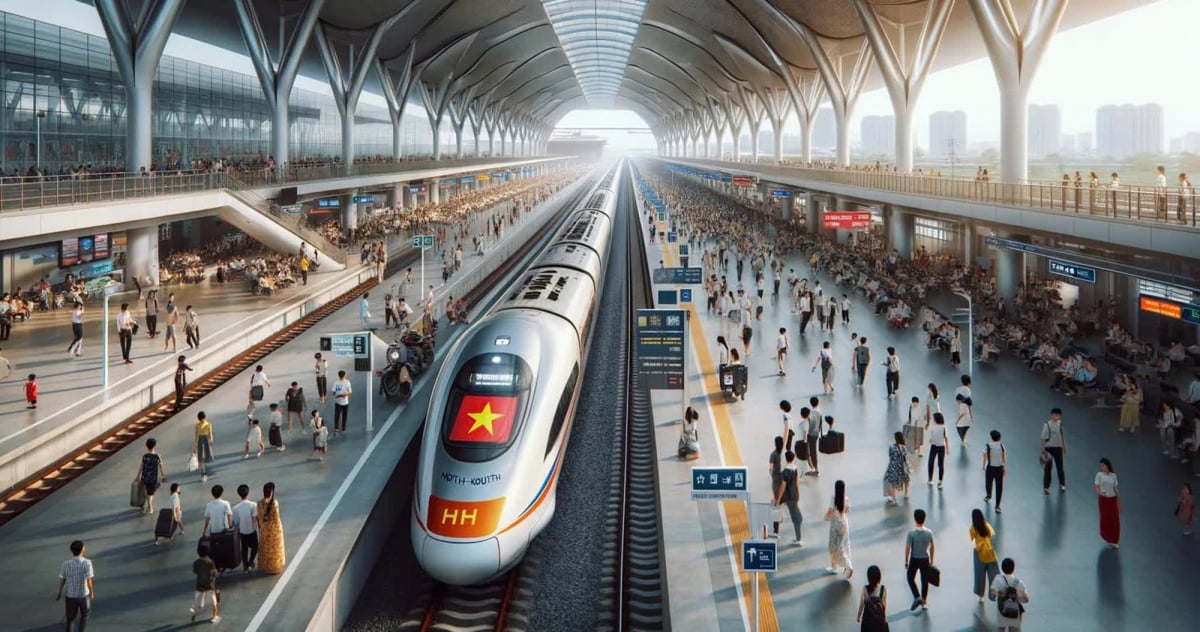
What are the principles for determining station location?
The North-South high-speed railway route was prepared by a joint venture of consultants to prepare a pre-feasibility study report on the basis of ensuring the shortest route length between points, meeting technical requirements on the route's plan and longitudinal profile.
In addition, the route is consistent with national planning, ensuring the minimum volume of construction, suitable for the terrain conditions of the area the route passes through. Limit cutting through sensitive areas of natural environment, social environment, relic sites, scenic spots, etc. Limit the volume of land clearance, try to avoid densely populated areas, reduce the impact on existing works.
The location of stations is one of the important factors determining the control points in the routing of high-speed railways. In principle, when determining the location of stations in the area, the following criteria must be met: At the economic and political center of each province or city where the route passes, a high-speed railway station will be arranged to serve the connection with the locality.
For additional station locations, the following criteria must be met: The distance between stations must ensure a minimum distance of about 30km; the urban area choosing to locate the station must be of type III or higher.
The selected passenger station locations are provincial, city and regional centers. These are densely populated areas and regional transportation hubs. Each station location is considered to ensure it is suitable for the current conditions and urban planning of each locality.
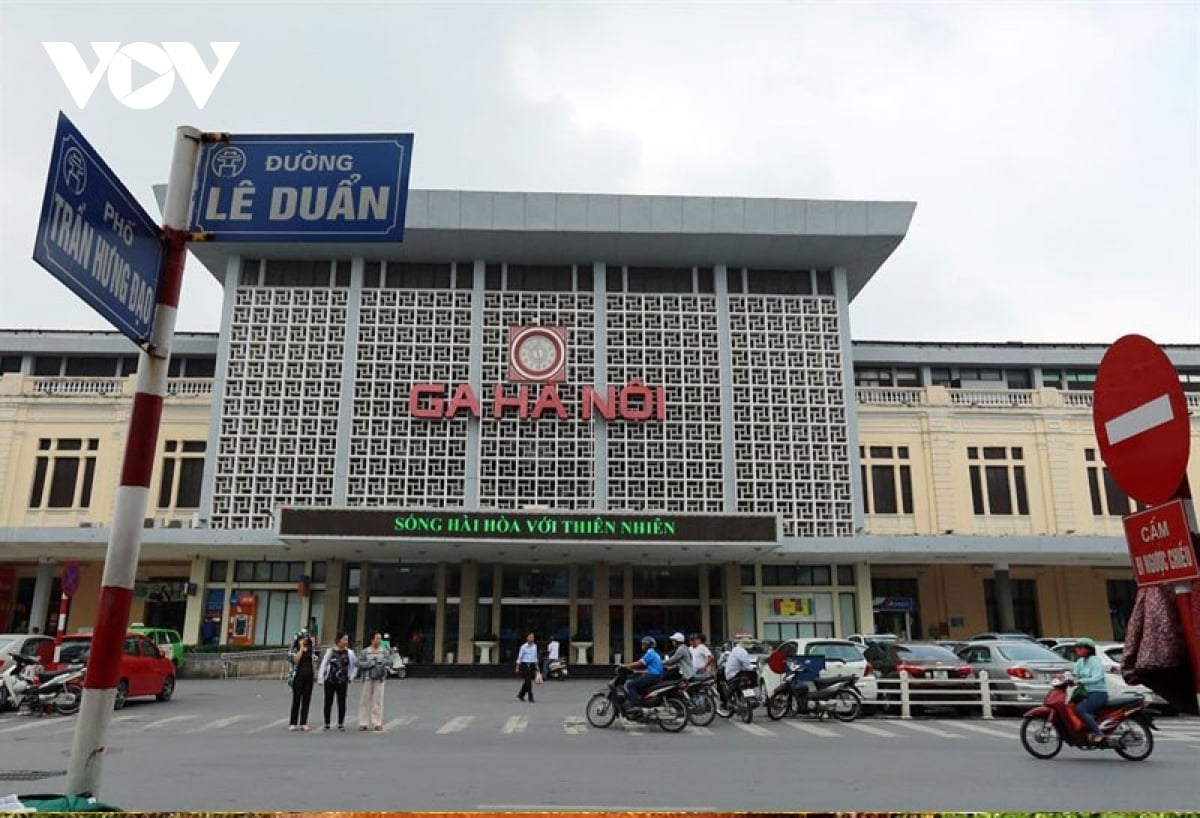
The station location should be close to the urban center or areas with potential for future urban development according to the TOD model (transit-oriented urban development) to ensure convenient connection and attract passengers. The distance between stations must be appropriate for effective operation.
Along with that is the ability to connect well with the public transport system of urban areas, especially the existing railway system, creating conditions to exploit the maximum capacity of each system, forming a complete transport network. Minimizing the impact on the social environment, the natural environment of the localities where the railway passes. Having favorable terrain, geology, and hydrology conditions, no need to reclaim large amounts of land, saving costs. The location of the freight station is determined on the basis of train organization (to organize hooking, cutting freight cars and turning locomotives).
The plan for the North-South high-speed railway route through 20 localities on the North-South corridor, including the section through Nam Dinh, was agreed upon by the Politburo and approved by the Party Central Committee on September 20.
Therefore, the Ministry of Transport recommends maintaining the current route plan through Nam Dinh. In the next step, the Ministry of Transport will direct the investor to continue optimizing the route as straight as possible.
Where is the suitable location of Nam Dinh station?
The North-South high-speed railway project will have 23 passenger stations, with an average distance between stations of about 67km. According to the consulting consortium, this is a suitable distance for the design speed of 350km/h, the practical conditions of the localities and world experience (with a speed of less than 250km/h, the average distance between stations is about 30-50km; with a speed of over 300km/h, the distance between stations is about 50-70km).
After passing Phu Ly station (Ha Nam), the basic line follows the current railway and National Highway 21 towards Nam Dinh city. After Nam Dinh station, the line goes towards Ninh Binh, crossing the Day River in the eastern area of Khanh Phu industrial park (Ninh Binh city).
Because Nam Dinh station is located to the East of the North-South axis, the high-speed railway route will go around Nam Dinh area. The selection of route and location of Nam Dinh station has been studied to ensure compliance with national sector planning, regional planning and provincial planning; meeting the economic and technical requirements of the route.
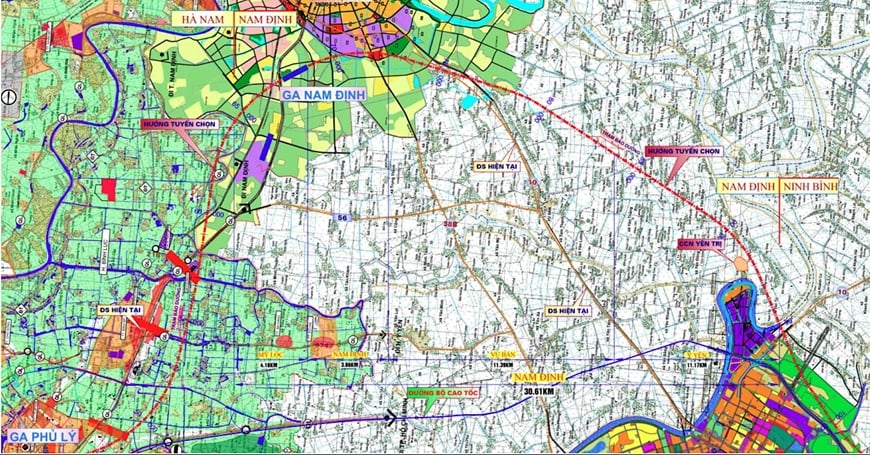
After working and discussing, Nam Dinh province agreed on the route and station location through Nam Dinh province located in My Hung commune, My Loc district, near Dang Xa station of the current railway line.
In addition to serving the transportation needs of Nam Dinh province, the high-speed railway also serves the entire region including Thai Binh province, a part of the southeast of Hai Duong and Hung Yen with a population of about 4 million. If the route does not go through Nam Dinh province, it will not be effective in connecting and will not be in line with the approved plans.
In addition to the existing railway line, the station location in Nam Dinh will be conveniently connected to the coastal railway line Nam Dinh - Thai Binh - Hai Phong - Quang Ninh in the future.
Nam Dinh Station, in addition to its central role in Nam Dinh Province, is also a connection point to a number of neighboring localities in the Red River Delta region. On the current railway line, Nam Dinh Station plays an important role in connecting the North-South corridor with the Red River Delta region.
Priority for domestic business orders
To successfully implement and complete the entire North-South high-speed railway project by 2035, the Ministry of Transport has proposed a series of specific and special policies for implementation.
Specifically, the Ministry of Transport has issued a policy to prioritize orders from domestic enterprises. Accordingly, the Ministry has proposed mechanisms and preferential policies for organizations and individuals participating in scientific and technological activities serving the project.
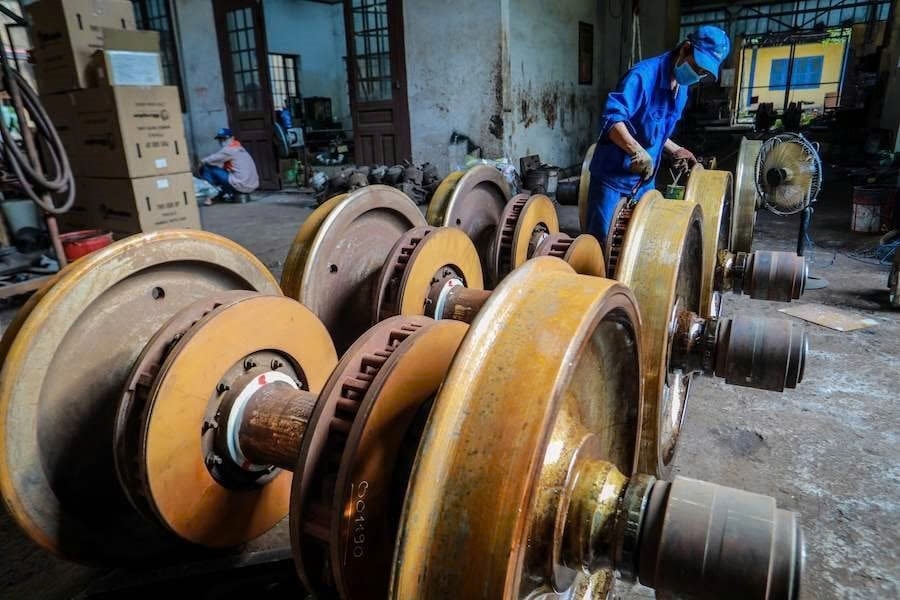
According to the Ministry of Transport, with specific and special policies, organizations and individuals will be able to decide on the form of selecting contractors to provide services and goods; at the same time, receive support from the state budget to purchase and operate machinery and equipment to serve the project implementation tasks.
Investors, general contractors, and contractors must prioritize placing orders with Vietnamese enterprises that have sufficient capacity to supply and train human resources to implement the project as well as ensure the management, operation, exploitation, and maintenance of the North-South high-speed railway system.
The Prime Minister decides on the list of railway industrial products, supporting industries and other industries serving projects that are assigned tasks or ordered by Vietnamese organizations and enterprises.
For railway industrial products, supporting industries and other industries serving the project that can be produced domestically, investors, contractors and general contractors must give priority to placing orders with Vietnamese enterprises.
Phi Long – vov.vn
Source: https://vov.vn/ky-nguyen-vuon-minh/dat-nuoc-vuon-minh/vi-sao-duong-sat-toc-do-cao-bac-nam-lai-di-vong-qua-nam-dinh-post1131381.vov




![[Photo] National Conference "100 years of Vietnamese Revolutionary Press accompanying the glorious cause of the Party and the nation"](https://vphoto.vietnam.vn/thumb/1200x675/vietnam/resource/IMAGE/2025/5/30/1cf6cd5c8a934ebfa347028dcb08358c)
![[Photo] General Secretary To Lam receives Chief of the Central Office of the Lao People's Revolutionary Party](https://vphoto.vietnam.vn/thumb/1200x675/vietnam/resource/IMAGE/2025/5/30/140435f4b39d4599a3d17975dfb444c5)









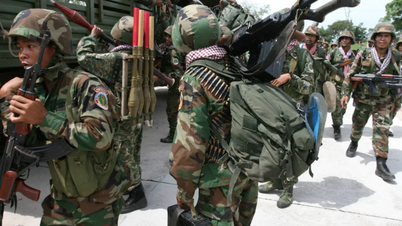




















![[Photo] Journalists moved to tears at the Memorial Service for the soldiers who died in Gac Ma](https://vphoto.vietnam.vn/thumb/1200x675/vietnam/resource/IMAGE/2025/5/30/9454613a55c54c16bf8c0efa51883456)









































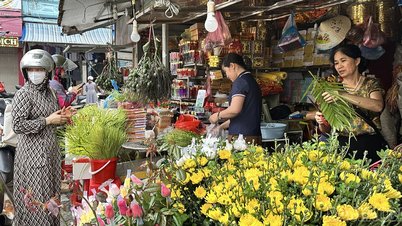






















Comment (0)